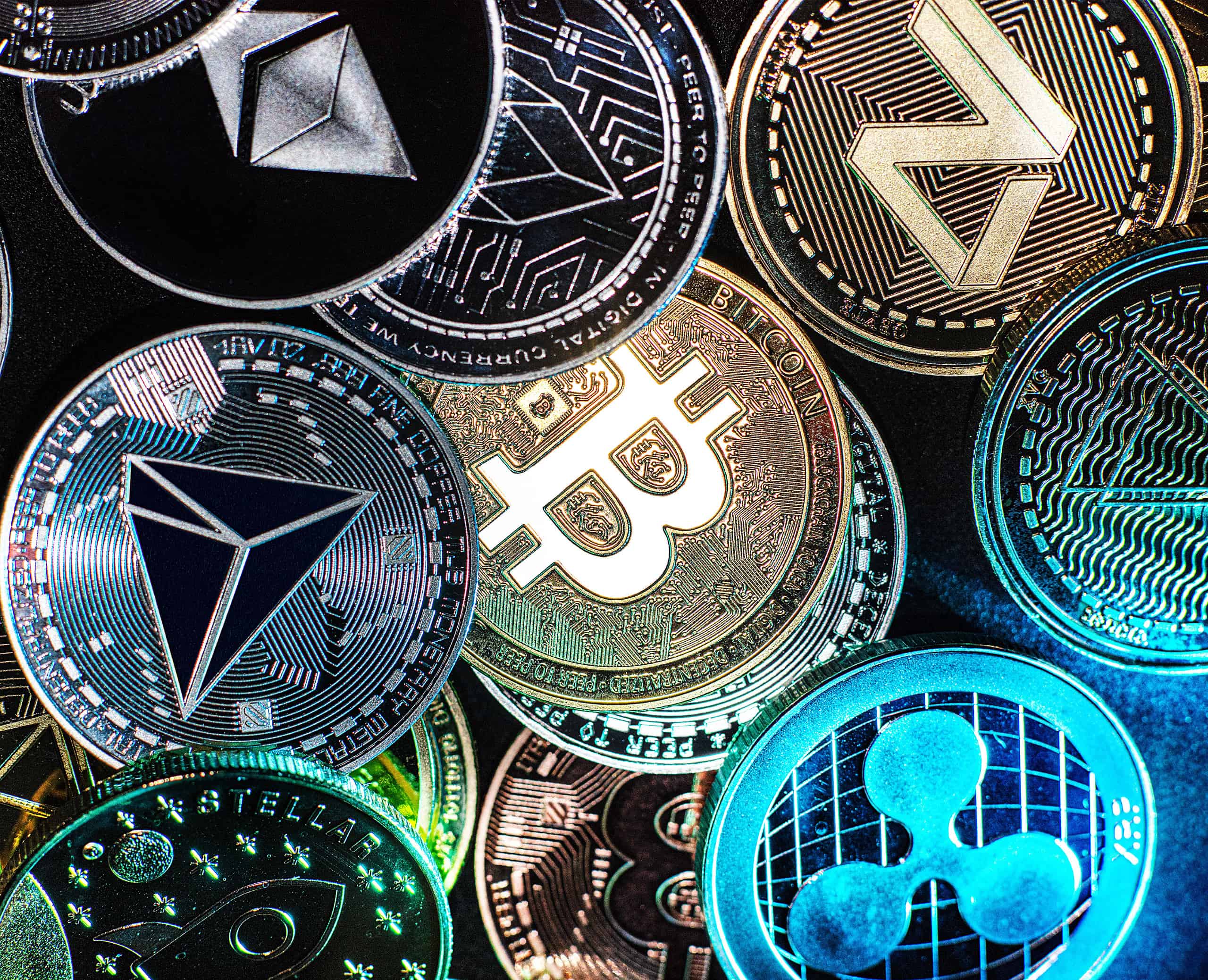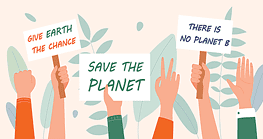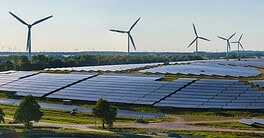The COP28 conference offers a real opportunity to rethink how we look at green finance solutions, Atlas Capital Team’s Chief Economist Nouriel Roubini and CEO Reza Bundy recently wrote.
To reach a net-zero world economy, the world will have to “mobilize capital at scale,” they argue. To that end, “We must draw on the global savings of individual investors as well as institutions such as pension funds, insurers, and sovereign funds.”
Interestingly, digital tokenization is how they expect to reach this potentially enormous pool of individual investors.
Tokenization is converting ownership or rights to real-world assets (RWA) into digital tokens that can be sold to individuals, institutions, and governments. Imagine buying a one-millionth ownership share of the Empire State Building in the form of a single token, for instance. Tokens are typically entered, tracked, and traded on a digital ledger, often a public blockchain. The basic idea is to create liquidity for things that aren’t themselves liquid.
Roubini, a co-founder of Atlas Capital, is still viewed in many circles—rightly or wrongly—as a fervid blockchain skeptic; but that’s a story for another day.
The potential for tokenization is vast. According to a 2022 Boston Consulting Group report’s authors, the total size of illiquid asset tokenization globally could reach $16 trillion by 2030. Anything can be tokenized, including private debt, small- and midsize-enterprise revenues and physical art, they add.
The authors also propose broad asset groups that can be tokenized, including green real estate investment trusts centered in climate-resilient locales, and green commodities like “soy, wheat, copper, rare-earth elements, cobalt, lithium, and so forth.”
This notion that public plus institutional investment won’t avert ecological disaster themselves—that what’s needed is a of democratization of finance—is beguiling, but it raises some questions.
First, there may not be enough sound green projects out there to tokenize. Second, just because something is tokenized doesn’t mean global investors will invest in it. Third, sovereign governments will need to support such efforts with enabling legislation and regulations.
Every Bit Helps
That said, tokenized finance is gaining traction. “Platforms that offer fractional ownership of green assets, for instance, can allow individuals with minimal capital to participate,” says Nadine Wilke, co-founder and chief growth officer of Particula, an RWA-token data platform. “Every bit counts; and when millions of individuals contribute, it can lead to significant capital.”
Neither is it any longer something for the wealthy only. Maria Shen, a general partner on the investment team at Electric Capital, told CNBC recently that it had been the province of institutional investors “like high net worth individuals, family offices, pension funds [and] university endowments.” But smaller participants are now also showing an appetite for tokenizing RWA.
In a global sense, this democratization of green finance seems more equitable too. “The most promising green investments occur in the private market,” says Andreas Park, a professor of finance at the University of Toronto at Mississauga, “and that makes these investments inaccessible for many retail and even [some] institutional investors.”
“Blockchains are borderless, and tokenized assets available on a public chain such as Ethereum could be available for anyone in the world,” explains Park. This would arguably enable people in climate-threatened areas like Africa “to buy a hedge against climate change. That seems only fair.”
Tokenization might also potentially boost assets under management for more conventional financial instruments—by several orders of magnitude. “It allows you to be larger than your average ETF [exchange-traded fund],” says Bundy. A large-scale ETF today might have a market cap of $500 billion. “You can get into the trillions in digital assets.”

However, tokenization isn’t likely to replace traditional finance anytime soon. Atlas Capital isn’t talking about investing directly in tokenized green projects like Australian solar farms or forest restoration projects when it launches its own green ETF, slated for Q1 2024. It will invest in other ETFs to do that.
“One of the great things about an ETF is you can invest up to 15% of your assets into illiquid investments,” says Bundy. “So that portion could be a fund-of-funds model where you distribute to Brookfield green funds, Blackstone Green funds, or Nomura green wind projects off the coast of Japan. There’s a ton of opportunities for us to distribute capital to those firms.”
In the future, tokenizing Australian solar farms or mangrove restoration efforts may become commonplace. “But right now, no one’s done that at scale; and no one’s done that substantially [in a way] for us to rely on to build a business model,” Bundy adds.
Things are moving faster on the fintech front, however. “People are already working on green tokenization solutions,” says Blake West, co-founder and CTO of Warbler Labs, which built Goldfinch, a decentralized credit platform. For example, he references one entrepreneurial borrower who creates clean cookware stoves in India. “The clean cookware saves [carbon] emissions compared with traditional wood burning stoves, and those saved emissions earn the company carbon credits which they can then sell. … These deals are tokenized.”
Still, what kind of scale can these projects offer? And can they flourish without some government support?
“Countries like Singapore and Switzerland are actively exploring regulatory frameworks to support green tokenization,” notes Particula’s Wilke. “Collaborations are emerging too—with institutions partnering with fintechs or even launching green token initiatives. The momentum is building, but there’s still a long way to go.”
In February, Hong Kong issued its first tokenized green bond, for 800 million Hong Kong dollars (about $102 million). In August, its local regulator signaled it would study bond tokenization more broadly.
Building Trust Is Paramount
Thorny problems still remain. “One of the primary challenges is establishing a robust and transparent linkage between the digital token and the underlying physical asset,” says Wilke. This requires a rigorous verification process that may be challenging to build at scale. Recent problems with carbon markets suggest there could be some bumps along the road.
And just because RWA are suddenly accessible to a broader public doesn’t necessarily mean people would purchase them. “It doesn’t guarantee a liquid market for them,” acknowledges Wilke.
For example, Warbler Labs hit a speedbump in mid-October when the $20 million in Goldfinch’s tokenized credit pool defaulted due to the underperformance of digital asset investments and a direct investment in a technology company.
Building investor trust will be critical. “Both institutional and retail investors need to trust the technology, the issuers and the platforms facilitating these transactions,” she adds.
Meanwhile, green tokenization’s benefits are apparent to many people active in this area, says Oliver Hellriegel, who heads the MBA study program at Germany’s Macromedia University: It can further incentivize sustainable practices, improve supply chain transparency, and increase investments in green initiatives.
But it will be crucial for “consumers to witness the tangible benefits of their investments,” he says, to show how they contribute to sustainability goals. “As consumers become more confident in the effectiveness of green tokens, they are more likely to embrace them.”
A Matter of Fairness?
Overall, are Roubini and Bundy right to argue that public plus institutional investment aren’t sufficient to avert ecological disaster and that what’s needed is a kind of democratization of green finance?
“Roubini’s assertion underscores a critical aspect of the climate challenge: Its sheer magnitude requires mobilization at every level,” says Wilke. “The collective power of individual contributions can’t be underestimated.”
But even vast inflows of capital may not be sufficient. “I don’t believe that private sector green investments alone are going to solve the problem of the world’s destruction,” says the University of Toronto’s Park. “Why? Because as the developing world seeks to reach the developed world’s living standards, they will massively increase their energy consumption.”
New, “revolutionary” ideas will be needed for energy production and carbon collection, and “only the public sector will create these solutions,” he adds. The problem isn’t a lack of financial instruments or money, says Park, “it is the lack of political will.”
It may also require a new mentality. “It’s about fostering a global culture of sustainability where every individual feels empowered to contribute,” Wilke concludes. “Tokenization can be a game-changer in this regard, breaking down barriers to entry and making green investments accessible to all.”




